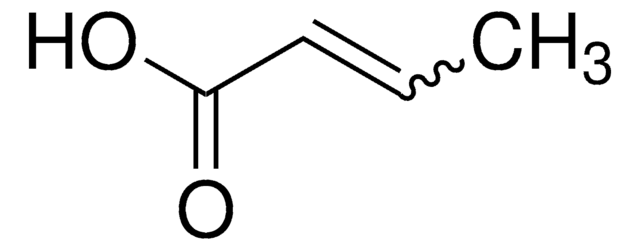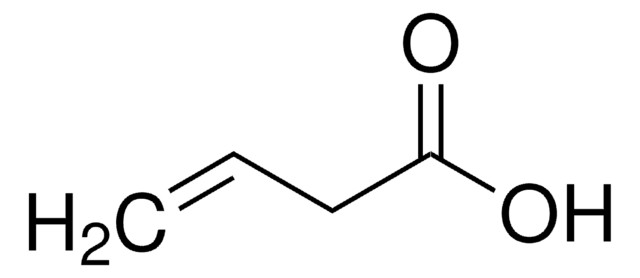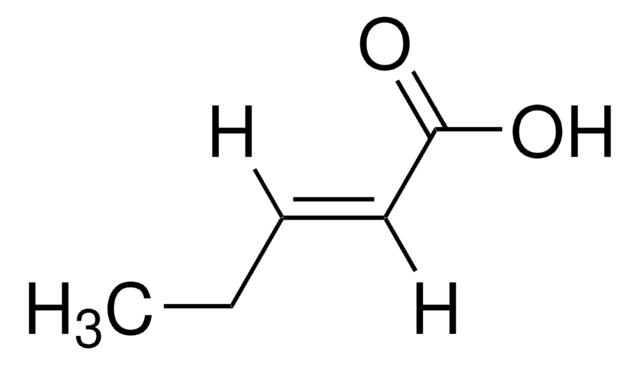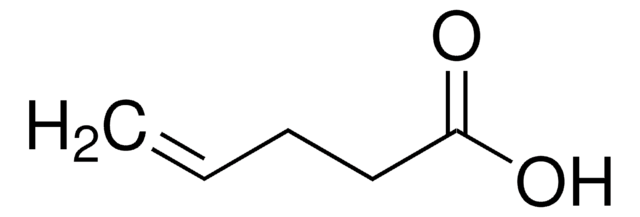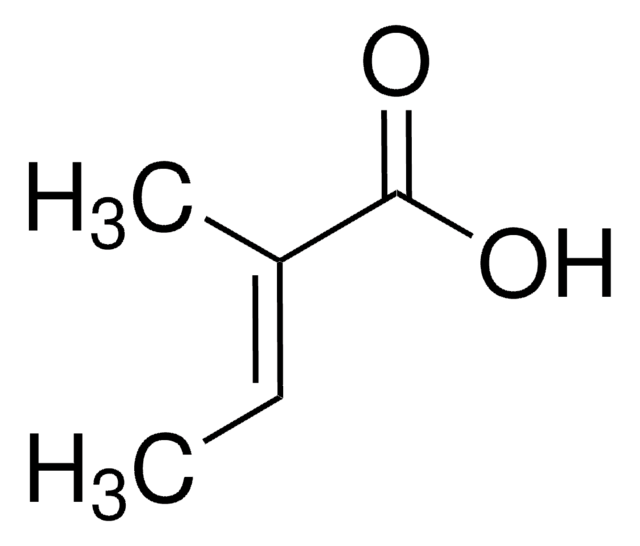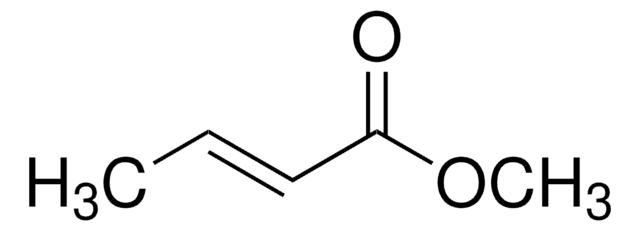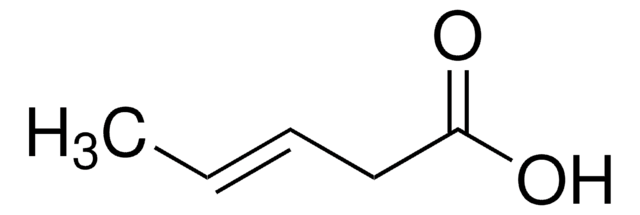113018
Crotonic acid
98%
Synonym(s):
trans-2-Butenoic acid
About This Item
Recommended Products
vapor density
2.97 (vs air)
Quality Level
vapor pressure
0.19 mmHg ( 20 °C)
Assay
98%
autoignition temp.
744 °F
expl. lim.
15.1 %, 171 °F
2.2 %, 135 °F
bp
180-181 °C (lit.)
mp
70-72 °C (lit.)
solubility
H2O: soluble
density
1.027 g/mL at 25 °C (lit.)
functional group
carboxylic acid
SMILES string
[H]\C(C)=C(\[H])C(O)=O
InChI
1S/C4H6O2/c1-2-3-4(5)6/h2-3H,1H3,(H,5,6)/b3-2+
InChI key
LDHQCZJRKDOVOX-NSCUHMNNSA-N
Looking for similar products? Visit Product Comparison Guide
Related Categories
General description
Application
Preparation Note
Signal Word
Danger
Hazard Statements
Precautionary Statements
Hazard Classifications
Eye Dam. 1
Storage Class Code
8A - Combustible corrosive hazardous materials
WGK
WGK 2
Flash Point(F)
190.4 °F - closed cup
Flash Point(C)
88 °C - closed cup
Personal Protective Equipment
Choose from one of the most recent versions:
Certificates of Analysis (COA)
Don't see the Right Version?
If you require a particular version, you can look up a specific certificate by the Lot or Batch number.
Already Own This Product?
Find documentation for the products that you have recently purchased in the Document Library.
Customers Also Viewed
Our team of scientists has experience in all areas of research including Life Science, Material Science, Chemical Synthesis, Chromatography, Analytical and many others.
Contact Technical Service